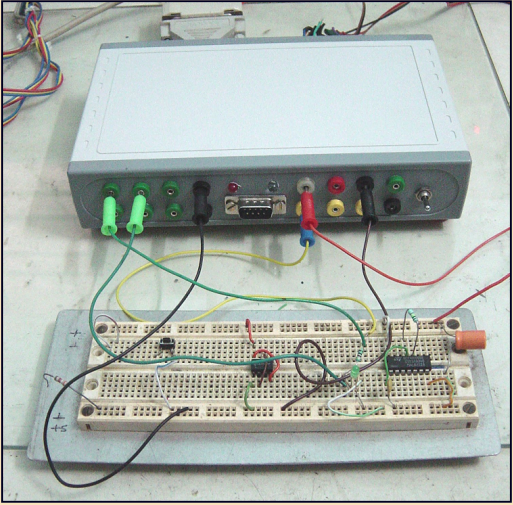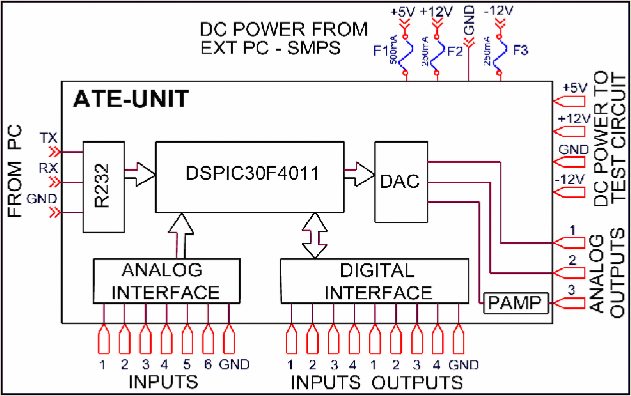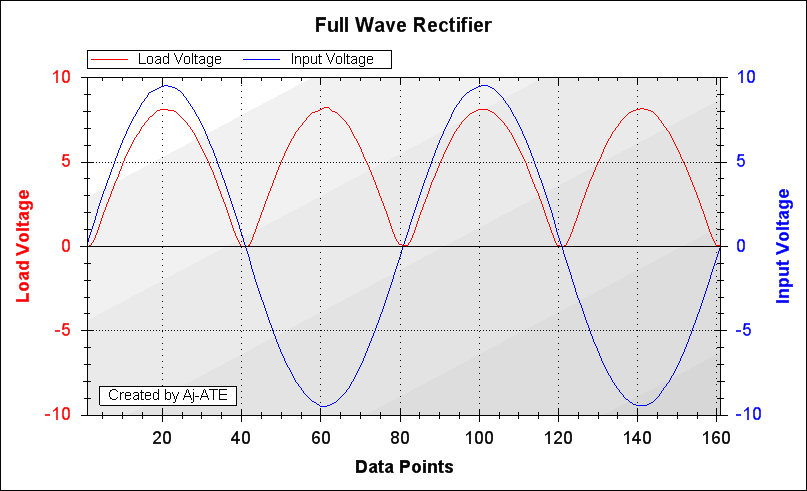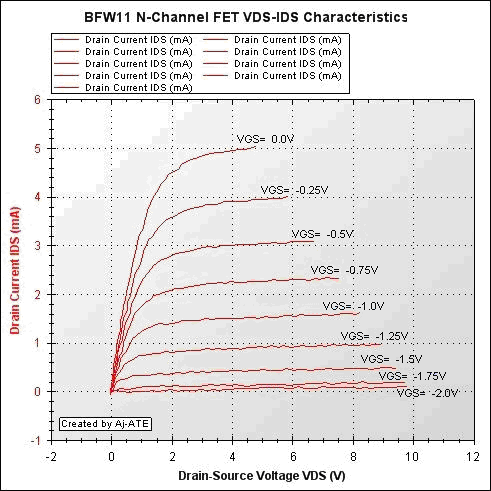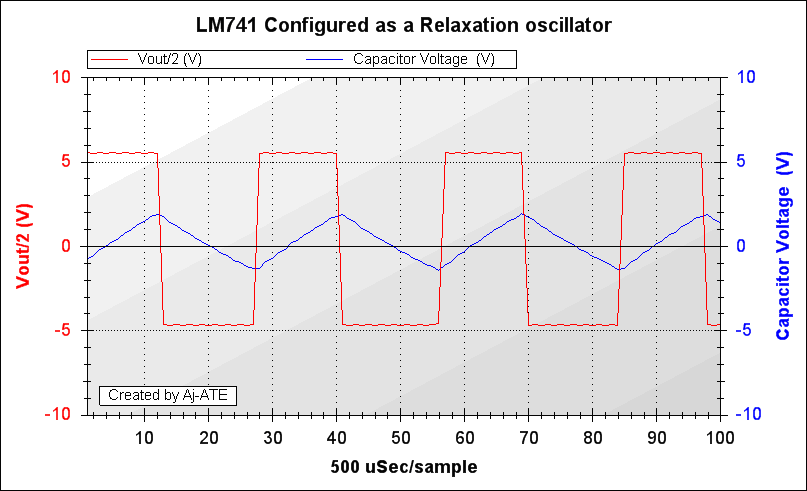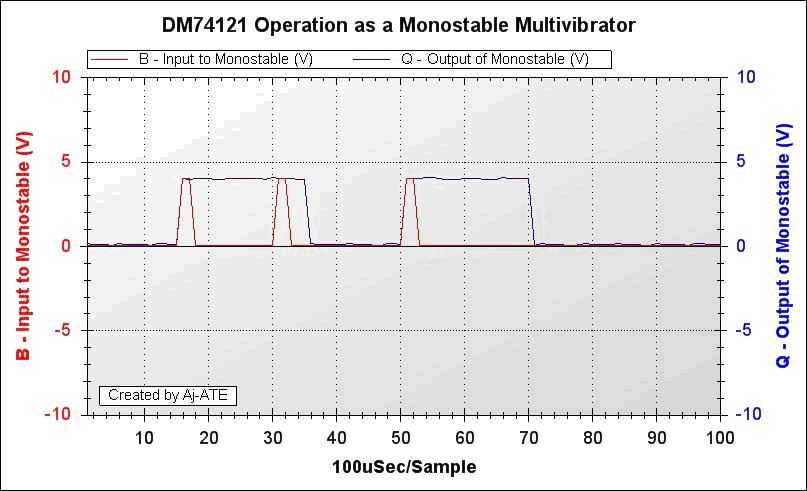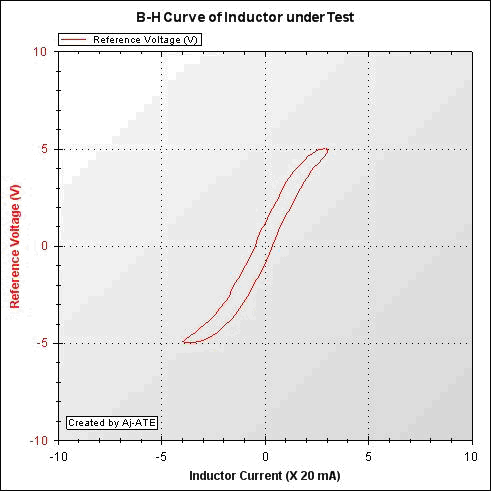With reference to the simplified block schematic of the ATE system. In order to provide power to the ATE-Unit and the circuits under test a standard PC SMPS is used as the power supply. Three fuses are added in series with the +5V, +12V and -12V lines from the SMPS to the ATE-Unit for safety, as the SMPS though short circuit protected, is rated for a much higher current capacity than required for testing of simple circuits.
The ATE-Unit is connected to any available serial port on a PC with Windows XP operating system. It is also possible to connect the unit to the PC USB port using a USB-Serial port adapter. This serial port connection along with the "Universal Analog Hardware Test Bench" Ver1.0 software provides communication with the ATE-Unit.
The circuit under test can be rigged up on a standard breadboard and powered from the power sockets provided. Power to the ATE-Unit and to the circuit under test comes ON only when the power switch on the ATE-Unit is activated.
The ATE-Unit provides three ±10V, 10Bit, analog output channels Vout1, Vout2 and Vout3 to the circuit under test. While Vout1 and Vout2 are Op-Amp outputs with a drive capability of ±10mA, Vout3 is power amplified to provide a drive of ±200mA. The maximum throughput rate is 20 kHz.
Six ±10V, 10Bit analog input channels (Ain1- Ain6) with an input impedance of typically 1MΩ are provided to read back analog data from the circuit under test. The maximum sampling rate is 2 mega-samples/sec.
Four buffered digital I/O channels (Dout1-Dout4 and Din1-Din4) are also provided for connection to the circuit under test.





